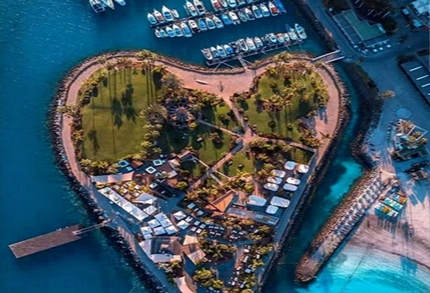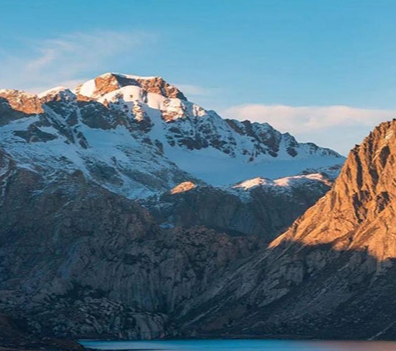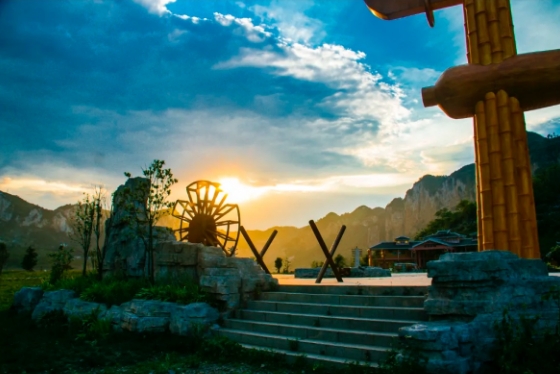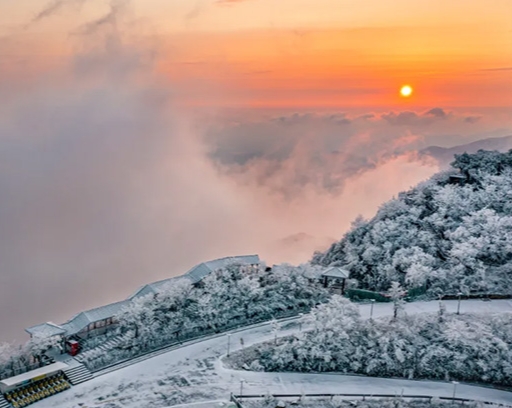The present situation of tourism development in the world and the opportunities and challenges in promoting mountain tourism
On August 18, the 2022 Asian Mountain Tourism Promotion Conference with the theme of "Amity, Sincerity, Mutual Benefit, Inclusiveness, Cooperation, and Sharing——Jointly Building a New Future for Asian Mountain Tourism" was held in Guiyang, Guizhou Province.Sandra Carvao, Expert of UNWTO,accepted an exclusive interview.

The following is the full text of the speech:
It's a pleasure to join you for the 2022 Asian Mountain Tourism Promotion Conference.It's a big regret that I cannot join you personally,but I do hope that in the very close future, we will be able to gather again in person and exchange our views on how tourism can advance mountain development.
If you’ll allow me,I will share my presentation to brief you briefly on,where we are in terms of tourism development worldwide and what challenges and opportunities do we face currently to advance the agenda of mountain tourism.
Worldwide as you all know,the pandemic has been one of the biggest challenges that the tourism sector has faced in its history.We have lost more than 70% of international tourists,both in 2020 and continuing in 2021.
We have also lost a significant amount of economic development,that is brought from terrorism to destinations around the world.Direct tourism GDP went down from $3.5 trillion US dollars to $1.6 trillion in 2020,and UNWTO estimates that 2021 would have ended with $1.9 trillion in direct tourism GDP.
As you can see,we still have a long way to recover for the lost ground.In terms of regions,we do see naturally that this recovery is still very uneven and very slow.Some of the regions around the world such as Europe and the Americas,where the pandemic has been advancing and countries have been opening up with different solutions,have improved a relationship between the development of tourism and also the restrictions.
We have seen how there has been some recovery.Asia and the Pacific with many destinations still closed,is among the most affected destinations worldwide.But still also the Middle East is 24% behind the numbers of 2020.Africa is also plus 12 but below 74% when you look into 2019.The most important message though is that,we have seen improvements.
We have seen improvements particularly after March of last year,If we compare the growth of international tourism during the whole year of 2021,which was around 4% with the period of March to December,which was obviously the period in which in 2020 the pandemic emerged,we can see that actually international tourist arrivals grew by 79%.So there is as I say a good light at the end of the tunnel.
For 2022, UNWTO scenarios point to a continuing recovery,although still on the lower level.So beyond the numbers of 2019,we will be probably be at minus 50 and minus 63.Obviously, the challenges are increasing,and we need to be very collaborative in the way that we address tourism development.
Going into the issue of mountain tourism,and how we can build a more sustainable path,but also how can we make tourism one of the tools,to recover the development of mountains in the pre-pandemic.UNWTO, food and agriculture organization of the United Nations, FAO,a mountain partnership was launched last year in December a report that tries to identify the challenges,that we have before us in terms of mountain tourism, possible opportunities,but also a series of case studies including one from China.So if you use a QR code that you see in the screen,you can download the report,and I do hope that it can be useful for the development of mountain tourism in China and beyond.
So what challenges were identified in this research?First, the big challenge we have is a lack of reliable tourism indicators in data in mountain tourism,It is difficult to measure the number of people that actually visit mountain destinations because of the diversity of mountain environments.So UNWTO and FAO will work this year,to develop new reports focusing specifically on the issues of measuring mountain tourism.
The second challenge is the concentration of visitor activities.Most of it will happen in specific areas where often there's infrastructure,that has been developed and many other populations do not benefit from tourism development.
Third and we all have seen the many pictures going around about pollution in mountain areas,particularly those plastic waste issues that we all need to face.So the issue of waste management is increasingly important in mountain destinations,and it is critical to develop infrastructure that can deal with the situation.Climate change naturally not only affecting global destinations,but particularly those in mountains which are more vulnerable,because their tourism offer depends often on the climate situation.So how do we address as a tourism sector in mountain destinations,climate change will be critical for the future of the tourism overall.
Another important challenge that we face is the social and cultural impact in local communities.Often, how are communities engaged in tourism development?How do they benefit?How are they trained to actually benefit more and more?And how can they develop offer for tourists,that is in line with their social characteristics,it’s respectful with local values,but also at the same time can contribute to their economic development.
Finally, the economic impact of mountain tourism is often not developed enough,because the issues of seasonality either concentrated in summer or in winter.The leakages, many of the income stays with the tour operator that might bring the tourist.Health and safety which we have seen is naturally a challenge now with the pandemic.But also crisis management,mountains are vulnerable environments.And it is critical that when we talk about tourism and mountains,it is important to have crisis management systems in place,not only for big crisis but also to deal with specific issues of tourists facing,for example, health situation facing some kind of problem in the mountain,because this has a huge impact on the perception of the destination if something happens.
So the report also sets a series of the recommendations,that can be followed and further developed in mountain destinations.
First, the importance of promoting climate sensitivity in low-impact tourism.Many activities specifically now with the pandemic,when people look for more open-air destinations,have an immense opportunity to be developed in mountain destinations.Walking, having health and wellbeing activities in mountains,does not require a huge infrastructure impact,does not have such a big impact as other activities.At the same time,it allows to develop the products that we need,for fostering demand out of the peak seasons.So it is very important to look into opportunities,to develop low-impact tourism mountains.
The second recommendation is to create systems,that allows us to monitor the impact of mountain tourism.In parks, in specific areas,it is critical to have systems of knowing how many people are in the area,to limit and manage the entrance of people when and if necessary,to have systems to manage the resources,but also the waste produced,and obviously to define carrying capacity limits for mountain destinations.
The third recommendation is how can we empower mountain communities,to take the lead in tourism development?And in this respect,it is important to create government structures in mountain destinations,to bring all the players together,to be the ones responsible for the definition,and the management of tourism development plans.Here is where there's a huge opportunity,to link agriculture and tourism in empowering communities through product development,through strong need to offer products to tourists,which add value to their experience and bring income opportunities.Another important recommendation is to build strong public-private sector partnerships with associations related to mountain tourism activities,with private sector investors which is one of the biggest challenges in mountain areas.
And the fifth is the importance of investing in infrastructure,particularly in digitalization.The access of mountain tourism destinations to the market,can be effectively achieved through the digitalization of businesses in mountain areas,but also very important through enhancing infrastructure to access these destinations,often in remote areas with difficult capacity in terms of transport.
Finally, this year is a very important year for all of us.The UN has designated 2022 as the international year of Sustainable Mountain Development,and tourism can and will make an important contribution to the celebration of this year,but also to see how through the knowledge and experiences,that we come together in sharing during this year.We can advance 2030 agenda with mountain tourism at its heart,I trust that this event will be another stepping stone in the celebration of this year.And I do invite you to look into the report,and to continue to do the fantastic work you’re doing in the Asian Mountain Tourism Promotion Conference,to advance mountain tourism in a sustainable way.Count on the World Tourism Organization to partner with you,to continue working together,and to lead terrorism as one of the drivers of mountain development.







